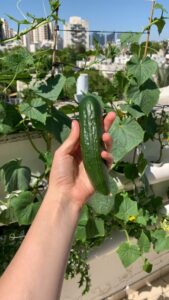In the world of hydroponic agriculture, just about anything is possible. You can grow almost any crop in a controlled setting using nutrient-rich water with the right setup.
But what about something a little more challenging, like an avocado? Believe it or not, with some knowledge and careful planning, you can grow a tasty hydroponic avocado that will thrive in your garden.
This guide will walk you through everything you need to know to start. So read on for tips on how o grow hydroponic avocado. Let’s get growing!

Image credit:pixabay.com
Hydroponic Avocado
Like most people, you probably think of avocados as a healthy but fatty food. But what if I told you there’s a way to grow them without soil? Believe it or not, hydroponic avocado growing is becoming increasingly popular as people are looking for ways to produce this nutrient-rich fruit locally and organically.
Hydroponic avocado growing is a process by which the fruit is grown in a nutrient-rich solution instead of in soil. This results in faster growth and higher yields than traditional methods. The avocado tree itself does not require much attention during its life cycle. All it needs are an adequate water supply, light, and nutrients.
For hydroponic avocado farming, the most important thing is to ensure that you use a nutrient-rich solution for the plants. This should be adjusted periodically to ensure that all nutrients needed for optimal growth are present. Additionally, temperature and humidity must be closely monitored to produce quality fruit. The pH level of your hydroponic solution should also be monitored regularly and adjusted accordingly.
Once the tree is established in its hydroponic environment, it will need to be pruned to promote healthy growth. This can be done with a pair of shears or clippers, depending on how much needs to be removed. Pruning helps ensure that the tree has an even spread of fruit.
Finally, ensuring that the hydroponic avocado tree has enough water is important. The plants should be watered regularly, and during hot weather, you may need to increase the watering frequency. Additionally, you will want to keep an eye on the nutrient levels in the solution so that they remain balanced.
Can You Grow An Avocado Tree In a 5-Gallon Bucket?
Can you grow an avocado tree in a 5-gallon bucket? Believe it or not, the answer is yes! Hydroponic avocado growing is becoming increasingly popular as people seek ways to produce this nutrient-rich fruit locally and organically.
Hydroponic avocado growing is a process by which the fruit is grown in a nutrient-rich solution instead of in soil. This results in faster growth and higher yields than traditional methods. The avocado tree itself does not require much attention during its life cycle. All it needs are an adequate water supply, light, and nutrients.
For hydroponic avocado farming, the most important thing is to ensure that you use a nutrient-rich solution for the plants. This should be adjusted periodically to ensure that all nutrients needed for optimal growth are present. Additionally, temperature and humidity must be closely monitored to produce quality fruit. The pH level of your hydroponic solution should also be monitored regularly and adjusted accordingly.
Once the tree is established in its hydroponic environment, it will need to be pruned to promote healthy growth. This can be done with a pair of shears or clippers, depending on how much needs to be removed. Pruning helps ensure that the tree has an even spread of fruit.
Ensuring that the hydroponic avocado tree has enough water is important. The plants should be watered regularly, and during hot weather, you may need to increase the watering frequency. Additionally, you will want to keep an eye on the nutrient levels in the solution so that they remain balanced.
Can You Grow Avocado Hydroponically
Avocado hydroponics is becoming increasingly popular among apartment dwellers who want to enjoy homegrown avocados’ taste and health benefits without taking up a lot of space. Hydroponic avocado growing involves growing the fruit in nutrient-rich solutions instead of soil, which allows for faster growth and higher yields than traditional methods.
Hydroponic avocado farming requires careful consideration of the environment, specifically temperature, humidity, and light levels. Additionally, it is important to ensure an adequate water supply for the plants and that the nutrient solution remains balanced. The pH level of your hydroponic solution should also be monitored regularly and adjusted accordingly.
To ensure good fruit yields, pruning is essential. This can be done with a pair of shears or clippers, depending on how much needs to be removed. Pruning helps ensure that the tree has an even spread of fruit.
In terms of equipment, you’ll need a hydroponic reservoir and timer, grow lights, nutrients, and a 5-gallon bucket or another container. Luckily, most of these items can be purchased online if you don’t have them already.

Image credit:pixabay.com
Do Avocados Grow Better In Water Or Soil?
Avocados offer an array of nutrition and can be a tasty addition to many dishes due to their distinctive flavor and creamy texture. But the question remains as to which is the best way to grow them: in water or soil?
While avocados grown in water may seem like a more convenient way to go, the soil is ultimately what provides the best results. Teaming with essential minerals and providing a venue for deep roots, soil can turn even a single seed into flexible foliage filled with lush green fruit when properly cared for.
On the other side of the coin, avocado plants grown solely in water will benefit from fertilization; as nutrients in the water become quickly depleted, there is no excuse for not offering a balanced nutrient supply from sources such as fish meal, compost tea, or worm castings. Whichever way they are grown, careful monitoring and tending your avocado plant is key to its growth and eventual reward.
Whether to grow avocados in water or soil depends on your goals and available resources. Hydroponic avocado farming is the best choice if you’re looking for a low-maintenance, high-yield solution. On the other hand, if you’re looking for more natural growth and greater variety, then soil-grown avocados may be the way to go. Either way, with patience and care, you can enjoy a delicious crop of fresh avocados from your backyard!
How long Does An Avocado Take To Grow In Water?
The time it takes for an avocado plant to grow and bear fruit in a hydroponic system can vary depending on the variety, the environment, and other factors.
Avocado trees are generally easier to grow than other fruit trees because no pollination is required for fruit production. When it comes to growing them in water, excitingly, the process is much faster. An avocado grown from a seed in a cup of water will be tall enough in about eight weeks to transfer into the soil and begin fruiting in approximately five -thirteen years.
It’s as easy as just suspending the seed halfway down in a cup of water with the broad end touching the water, keeping the water level constant, and allowing it to receive plenty of sunlight. Keep an eye on it since you’ll know when it’s time to transfer when you see roots coming out of the bottom, leaves coming out of the top, and distinct trunks forming beside all that wonderful new foliage!

Image credit:pixabay.com
Conclusion
Avocado is a delicious, nutritious fruit that can be enjoyed year-round with proper hydroponic gardening techniques. With the right equipment and careful attention to environmental factors such as temperature, humidity, light levels, and pH, you’ll soon be enjoying fresh avocados from your backyard. So get started today and take advantage of all the delicious benefits hydroponic avocados offer!






